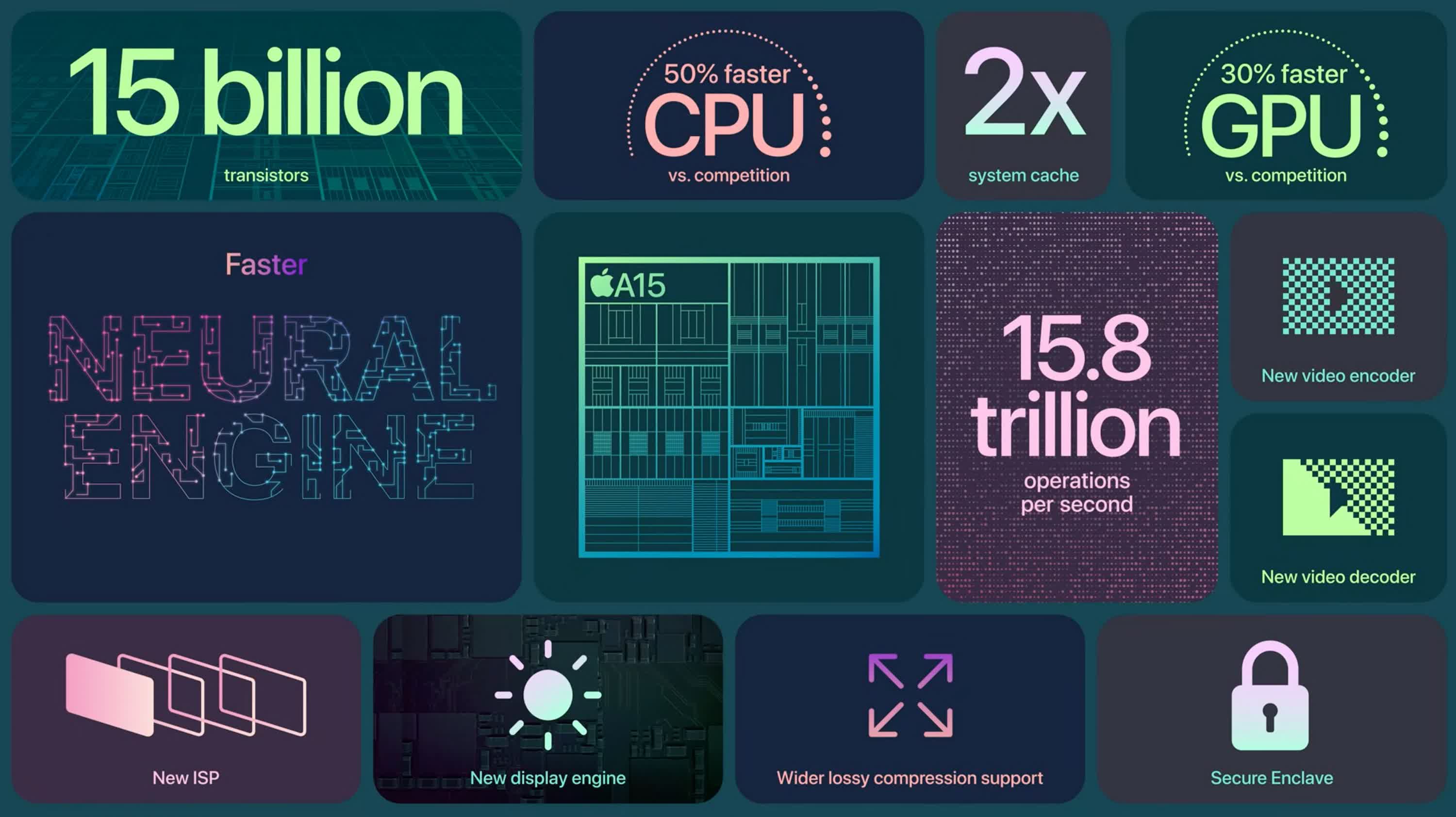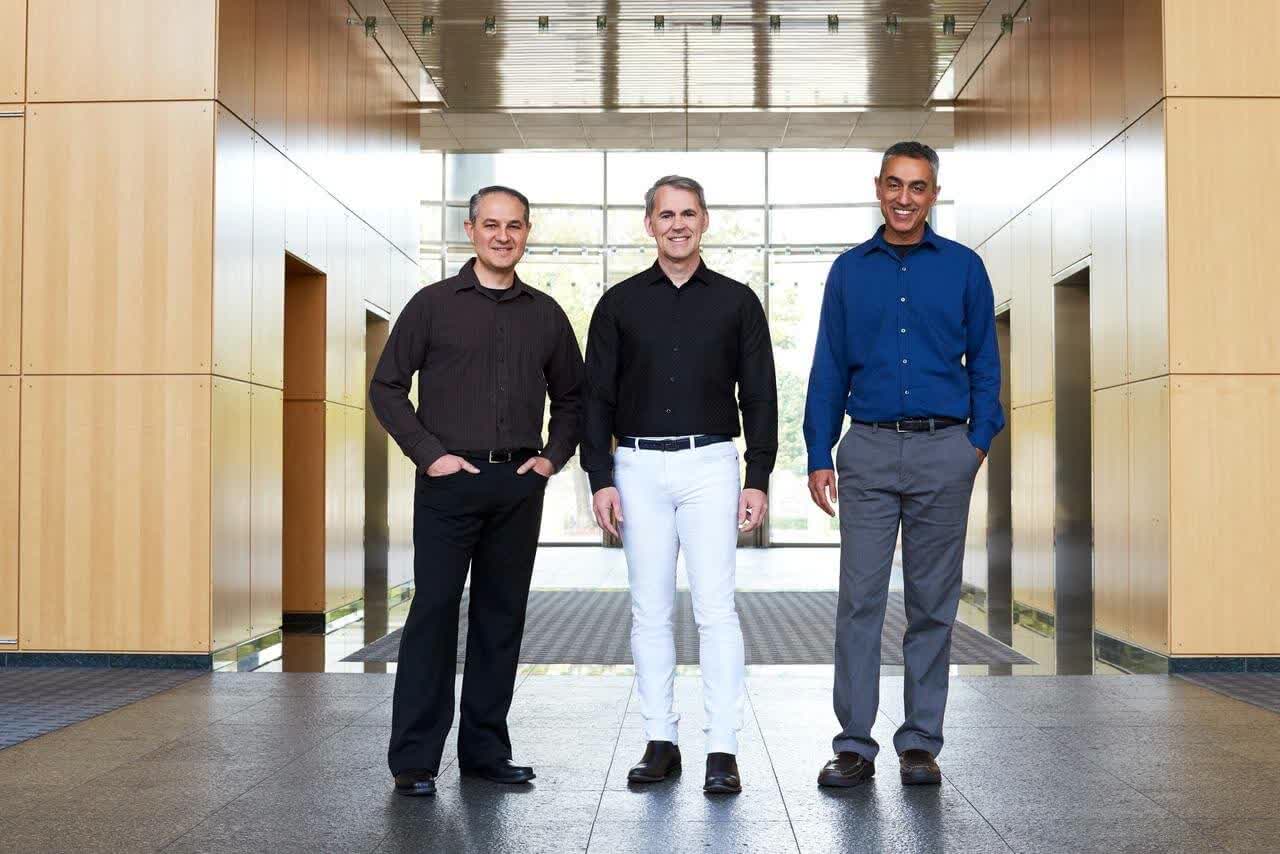Apple's A15 Bionic is faster against the "competition," less so against its predecessor
In context: For years, when Apple tree revealed a new A-series chipset, information technology would telephone call it "the fastest we've e'er made" and proceed to compare it with its predecessor. Every new SoC would see incredible performance gains that would look adept during keynotes and manifest through both benchmarks and a lot of satisfied iPhone users. This twelvemonth, however, the equation has inverse to "frankly, the competition is nonetheless playing catch up with our chips."
On the surface, the A15 Bionic in the new iPhones is an impressive chip of kit, with over 15 billion transistors etched using TSMC'due south five nm process node. The CPU configuration has remained largely the same as that within the A14 chipset, with two new high-performance FireStorm CPU cores paired with 4 IceStorm free energy-efficient cores. Apple didn't offering a performance comparison with the A14 and instead chose to highlight the fact that its new A15 chipset provides a 50 percent faster CPU performance when compared to the competition.
The new iPhone 13 and iPhone 13 Pro are both powered by an A15 chipset, merely they take a small yet of import divergence: the GPU in the iPhone 13 Pro has one extra core for a total of five cores and support for a variable refresh rate. That said, the iPhone xiii is no slouch either, with Apple claiming 30 percent faster graphics performance—when compared to the competition. We're starting to see a blueprint here.

Apple tree has kept the aforementioned Neural Engine with a 16-core configuration, but now it can clasp more than performance out of it—15.8 trillion operations per second, to be precise. The company again avoided a comparison with the NPU in the A14, which is capable of 11 trillion operations per second in machine learning tasks.
Other details are not articulate at this bespeak. For case, Apple tree said it integrated new video encoding and decoding capabilities into the A15 design but didn't mention what those were, exactly. Many speculate that since the A14 already supports AV1 decoding, the A15 may well be able to accelerate AV1 encoding tasks.
Apple won't say, but future A-series chipsets will bring smaller improvements that no longer warrant a comparison with their predecessors. In the case of the M1 SoC, information technology made sense for the Cupertino behemothic to make performance claims confronting Intel processors in the aforementioned class. With the A15 Bionic, the company is at present drawing comparisons to flagship chipsets from competitors like Qualcomm, Samsung, and MediaTek.
There are iii reasons for this behavior. The first is that A14 and A15 chipsets have a big enough atomic number 82 over the competition that Apple tin can easily make that a selling point instead of the usual "our fastest yet" merits. This is why the visitor's tune this year was, "frankly, the competition is notwithstanding playing catch upwardly to our fries. Not merely from final year, but from 2 years agone."
The second reason is related to diminishing operation gains expected with upcoming process nodes. For reference, TSMC says its N4 node will offer a lot more logic density, but the overall improvements will be a balancing act between up to a 15 percentage speed gain and upwards to a xxx percent gain in energy efficiency. That means the A16 Bionic will probably be a more than modest upgrade over the A15 or even the A14 Bionic.

Finally, Apple has been dealing with an exodus of talent that may have delayed plans for a more significant architecture upgrade. The most notable is the difference of scrap designer Gerard Williams, who left Apple to co-found Nuvia with 2 Apple veterans. He was followed by several Apple engineers, and before this year, his company was snapped by Qualcomm for $one.4 billion.
Equally you'd expect, Apple wasn't too happy about this development and dragged Williams into court for allegedly using the quondam's trade secrets to boost his new venture. Just the company has other things to worry about—its senior engineers continue leaving to course their own companies. As reported past Dylan Patel over at SemiAnalysis, some of them have joined a mysterious new startup called Rivos, which is working on a high-performance RISC-V CPU design, probable the starting time of its kind.
What this amounts to in the finish is more contest in the custom silicon race, which is bound to gradually erode Apple tree's leadership in operation per watt. Things are virtually to go interesting, and then scout this space.
Source: https://www.techspot.com/news/91256-apple-a15-bionic-faster-against-competition-less-against.html
Posted by: bussfirmervis.blogspot.com


0 Response to "Apple's A15 Bionic is faster against the "competition," less so against its predecessor"
Post a Comment